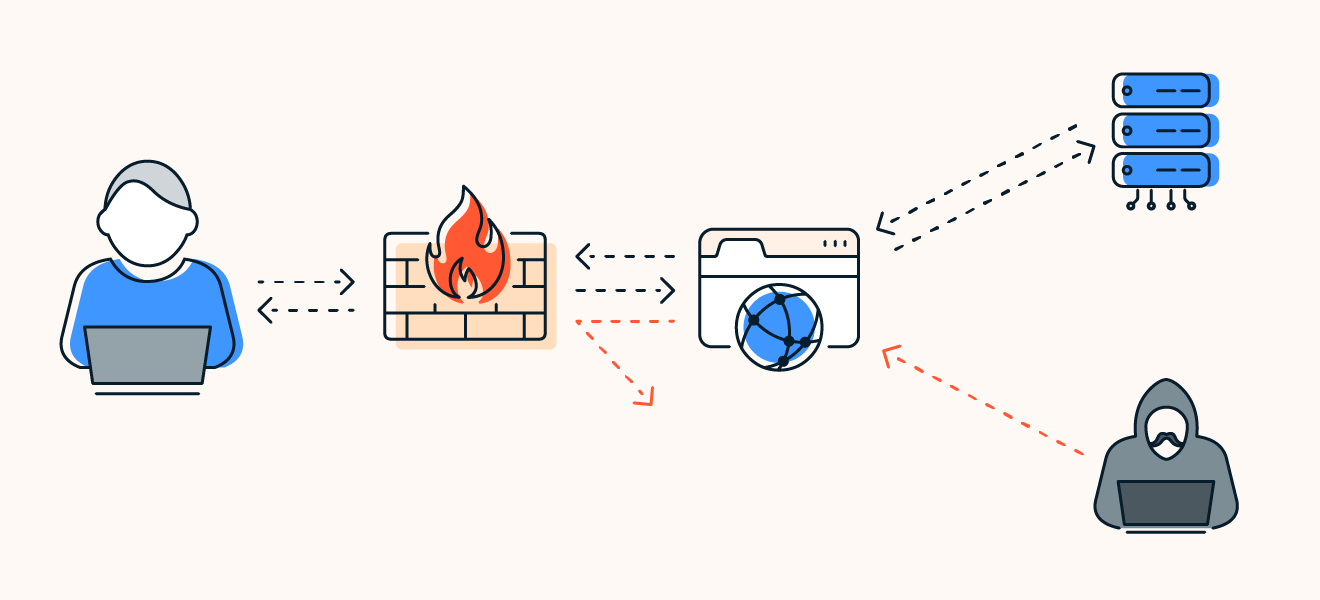In today’s digital landscape, web hosting services are crucial for businesses and individuals to establish an online presence. However, the proliferation of cyber threats means that robust security measures are essential for protecting these online assets. One of the most fundamental tools in this defense strategy is the firewall. Firewalls are pivotal in safeguarding web hosting environments from a variety of threats. This article explores how firewalls protect against common web hosting threats, elucidating their mechanisms and benefits.
Table of Contents
Understanding Firewalls
At their core, firewalls are security devices or software designed to control and monitor incoming and outgoing network traffic based on predefined security rules. They act as a barrier between a trusted internal network (such as a web server) and an untrusted external network (such as the internet). Firewalls use a set of rules to permit or block data packets based on IP addresses, ports, protocols, and other criteria.
Types of Firewalls and Their Functions
Firewalls come in several forms, including hardware firewalls, software firewalls, and cloud-based firewalls. Each type offers different features, but all serve the fundamental purpose of traffic filtering and threat prevention.
- Hardware Firewalls: Dedicated physical devices that sit between the web server and the internet. They provide a high level of security and are often used by businesses for enterprise-level protection.
- Software Firewalls: Installed on individual computers or servers. They are more flexible and configurable, suitable for smaller-scale environments or as a supplementary security measure.
- Cloud-Based Firewalls: Offered as a service by cloud providers, these firewalls provide scalability and advanced features like real-time threat intelligence, making them ideal for modern web hosting environments.
Protecting Against Common Web Hosting Threats
Firewalls are instrumental in mitigating a range of threats commonly faced by web hosting services. Here’s a detailed look at how firewalls address these threats:
1. Distributed Denial of Service (DDoS) Attacks
What It Is: DDoS attacks overwhelm a web server with a flood of malicious traffic, aiming to exhaust resources and disrupt service.
How Firewalls Protect: Firewalls can detect unusual traffic patterns and apply rate limiting to mitigate the effects of DDoS attacks. Advanced firewalls often include DDoS protection features that automatically detect and filter out malicious traffic, allowing legitimate users to access the website without interruption.
2. SQL Injection Attacks
What It Is: SQL injections occur when attackers exploit vulnerabilities in a website’s SQL queries to gain unauthorized access to the database.
How Firewalls Protect: Firewalls with Web Application Firewall (WAF) capabilities can analyze HTTP requests and filter out malicious SQL injection attempts. By inspecting the data being sent to the web server, firewalls can block potentially harmful SQL commands and protect the database from unauthorized access.
3. Cross-Site Scripting (XSS)
What It Is: XSS attacks inject malicious scripts into web pages viewed by other users, potentially compromising user data or session information.
How Firewalls Protect: Modern firewalls with WAF capabilities can identify and block suspicious scripts and code within HTTP requests and responses. They filter out harmful content and ensure that only safe, sanitized data reaches the web application.
4. Malware Infections
What It Is: Malware infections involve malicious software designed to damage, disrupt, or gain unauthorized access to web hosting environments.
How Firewalls Protect: Firewalls with integrated threat detection features can recognize and block known malware signatures. Additionally, they can monitor for anomalous behaviors indicative of malware activity, helping to prevent infections and alert administrators to potential threats.
5. Port Scanning and Unauthorized Access
What It Is: Port scanning is a method used by attackers to find open ports on a server, which can then be exploited to gain unauthorized access.
How Firewalls Protect: Firewalls control access to network ports based on rules that specify which ports should be open or closed. By restricting access to only those ports that are necessary for web hosting, firewalls reduce the attack surface and prevent unauthorized access attempts.
6. Brute Force Attacks
What It Is: Brute force attacks involve systematically trying different combinations of usernames and passwords to gain access to user accounts.
How Firewalls Protect: Firewalls can incorporate rate-limiting features to prevent excessive login attempts. By detecting and blocking multiple failed login attempts from the same IP address, firewalls help to thwart brute force attacks.
Conclusion
Firewalls are a crucial component of web hosting security strategies, providing essential protection against a variety of common cyber threats. Through traffic filtering, intrusion prevention, and real-time threat detection, firewalls safeguard web servers from attacks such as DDoS, SQL injection, XSS, malware infections, unauthorized access, and brute force attempts. By deploying the right type of firewall and configuring it properly, web hosting providers can significantly enhance the security of their services and ensure a safer online environment for users.
In summary, firewalls are not a one-size-fits-all solution, but when employed effectively, they offer a robust defense against many of the most common and damaging web hosting threats. As cyber threats continue to evolve, ongoing updates and adjustments to firewall configurations are necessary to maintain effective protection.



